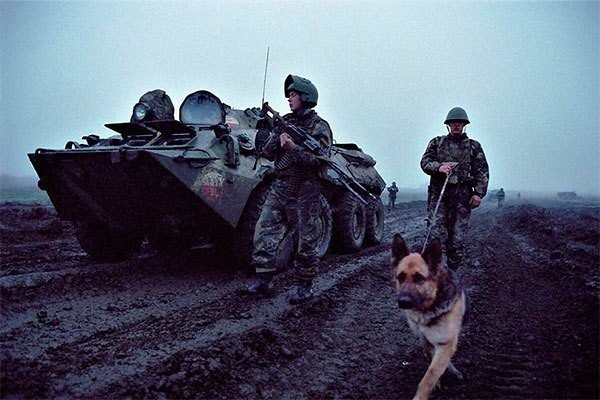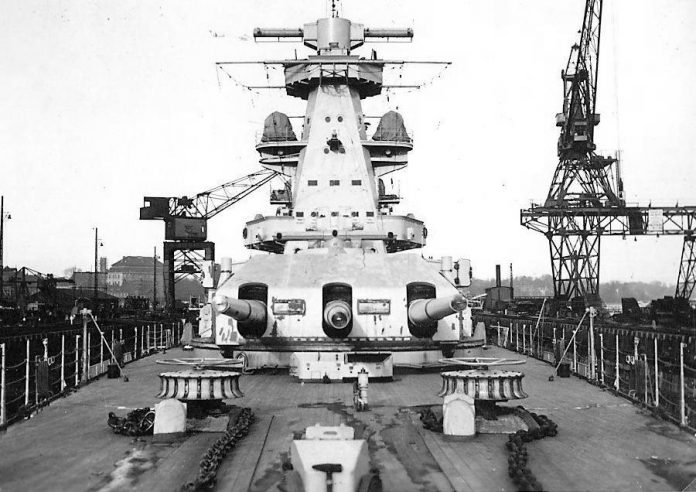
Now if someone says: "BUT, pocket battleships…” I don’t know, what is in them pocket and even more so battleship. Conventional heavy cruisers, except that it turned out seriously with the main caliber. But even in this regard, it does not quite correspond.
"Deutschland" had a main caliber 283 mm, and all the normal battleships of that time - from 380 mm and more, to 460.
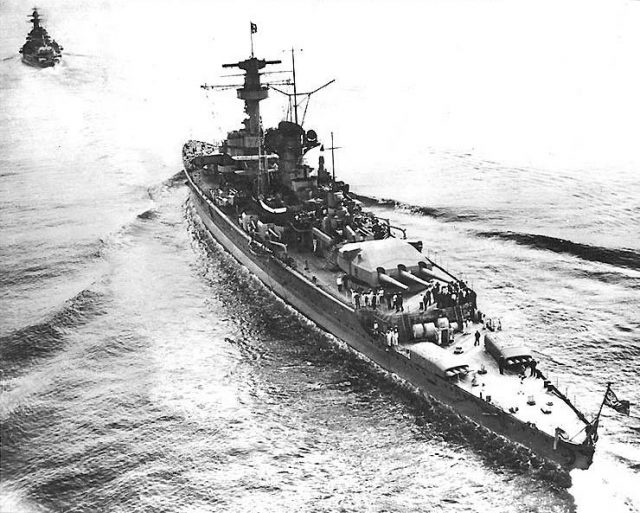
Only Russian / Soviet battleships stuck in the past and were content with caliber 305 mm. But this is also more of an exception., than the rule.
So what is this battleship? Yes, no. But the cruisers turned out ... peculiar. Basically, like all German surface ships of that time. Really, sometimes it seems, that the Germans went their own way in the development of warships.
From my point of view, heavy cruisers of the Deutschland type became the height of such a strange approach to shipbuilding.
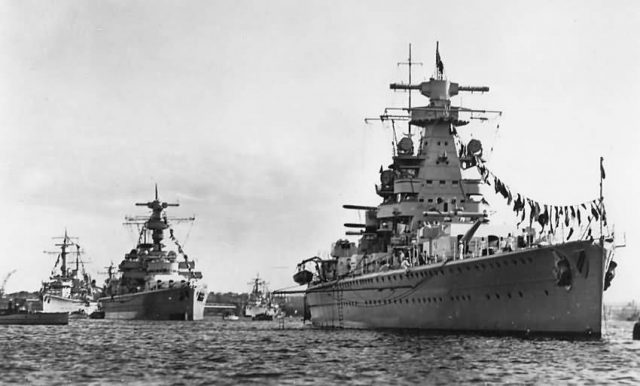
Let's dive into history.
28 June 1919 city, peace treaty signed at Versailles after World War I, one of the conditions of which limited the number of ships, which Germany could have as a loser.
As a "linear fleet" Germany was allowed to leave six battleships in service. The rest ended their lives not in the best way.. Yes, across 20 years it was possible to build new ships, and there was an interesting limitation. The displacement of new ships should not exceed 10 000 t. And that was the only limitation.
And three years later, an agreement was held in Washington, about which I have already written (cm. «Killer cruisers from Washington«). And maritime powers, which did not include Germany, pledged to limit the tonnage of cruisers 10 000 tonnes, and the main caliber 203 mm.
And it turned out to be a funny nuance: the Germans could build ships with the same restriction in 10 000 tonnes, but no one limited them by caliber, because Germany did not sign the Washington Naval Treaty!
And the Germans decided to take advantage of the suddenly fallen advantage. Or did they think, what is the advantage.
Several projects have been developed, but they were rejected for various reasons. But in 1924 year, the new commander of the "fleet" of Germany, Admiral Zenker, was able to clearly articulate, what kind of ship does the fleet need.
It was supposed to be a cruiser-class ship, fast, to calmly get away from battleships and battlecruisers, and armor and guns should have made it possible to confidently fight heavy cruisers.
Through complex calculations and experiments, as a result, the naval forces came to the conclusion that, that it is not worth it to unnecessarily increase the main caliber, especially at the expense of speed and maneuverability. Yes, and the Germans had certain problems with the manufacture of large-caliber barrels, because some Krupp factories remained in the French-occupied Ruhr zone.
TO 1927 three projects were completed:
- battleship monitor, four 380 mm guns, armor belt - 250 mm, speed - 18 knots;
- armadillo, four 305 mm guns, armor belt - 250 mm, speed 18 knots (or 200 mm armor and 21 node);
something like a cruiser, six 280 mm guns, armor belt - 100 mm, speed 26-27 knots.
The commission voted for the third draft. He really looked more modern.. And then the leadership of the fleet began to disfigure the project with their Wishlist.
To begin with, the composition of artillery was changed. According to the project, the ship was to be armed with eight universal guns with a caliber 120 mm. The leadership of the fleet insisted on the installation of guns 150 mm, not universal. And the "hole" in the air defense should have been plugged with anti-aircraft guns 88 mm.
Besides, on the deck there should have been a place for torpedo tubes, and in the holds there is a place for torpedoes and anti-aircraft shells in huge quantities.
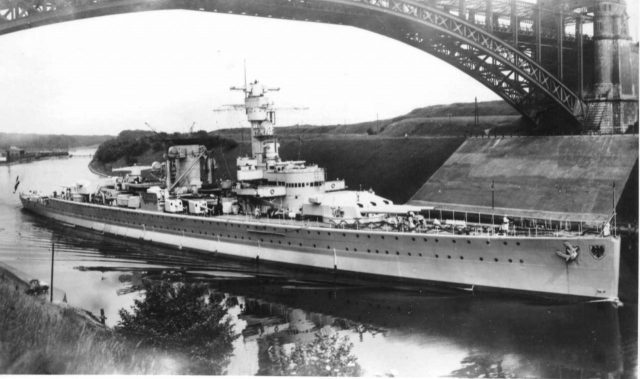
Change the project like this, everyone understood, what about that, to meet the allotted 10 000 tonnes, not talking at all. Because I had to cut the armor to 60 mm.
In addition to weapons, naval commanders wished to further increase the speed to 31 host, but it was really overkill, therefore they had to calm down and lay the first ship in 1929 year. This was "Deutschland", after whom the whole series was named (in January 1940 year renamed "Lützow").
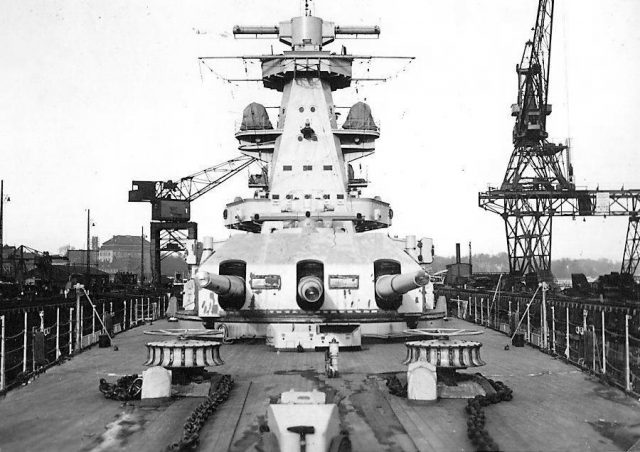
AT 1931 year was laid "Admiral Scheer", and 1932 – «Admiral Count Spee».
What happened constructively?
By that time, it became clear to everyone in the world, what to build a sane ship and put in 10 000 tons of displacement everything desired is simply unrealistic. Perhaps, more or less it came from the Japanese, yes, even with reservations.
Two turrets with three guns instead of three turrets with two saved precious weight. The armor was so-so, Yes, the Germans have always been strong in terms of competent booking of their ships, but the miracle didn't happen, anyway. The ships were practically defenseless against 203-mm shells, yes, and 152 mm could cause trouble.
Speed performance was satisfactory.. Eight diesel engines from MAN with a total capacity 56 800 HP. provided speed in 26-27 knots. And yes, diesel engines guaranteed a very good cruising range, at speed 10 knots it amounted to 20 000 miles. Slow, but sure.
weaponry. Main caliber 283 mm guns in two turrets with a maximum rate of three rounds per minute (in practice - two ideally) and firing range up to 36,5 km.
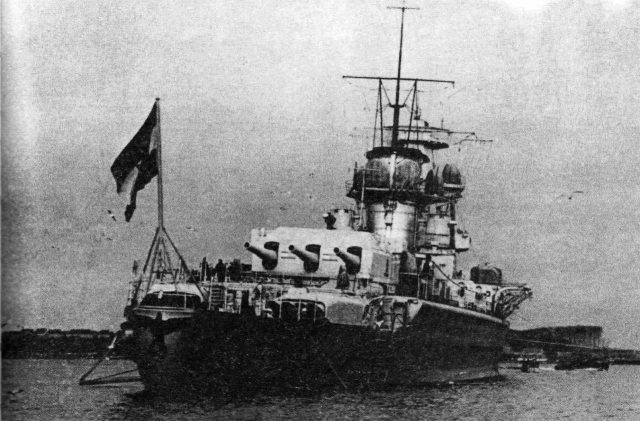
Eight 150-mm guns were installed as an auxiliary caliber, four aboard. Maximum theoretical rate of fire up to 10 rounds per minute, but in real conditions it is twice less. The guns were placed in the towers, but the booking was frankly insufficient.
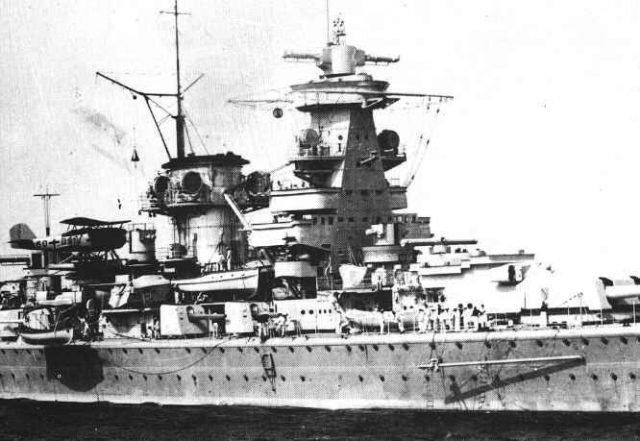
88-mm anti-aircraft guns and small-caliber installations were used to protect against air attacks., the number of which is constantly changing. Instead of 88-mm guns, twin 88-mm mounts were installed, the original eight 37 mm guns in twin mounts were supplemented by six 40 mm Flak guns by the end of the war 28, twenty-eight 20 mm Flak anti-aircraft guns 30 and two of the same 37 mm guns.
Mine-torpedo armament consisted of 533-mm torpedo tubes, which were located behind the aft turret of the main caliber on the sides.
The ships also had an air group. Each cruiser was equipped with a catapult, and the kit included two Arado Ar196 seaplanes, however, in practice, one managed. by the way, this attitude greatly spoiled the affairs of the Sheer in Soviet northern waters in the summer 1942 of the year.
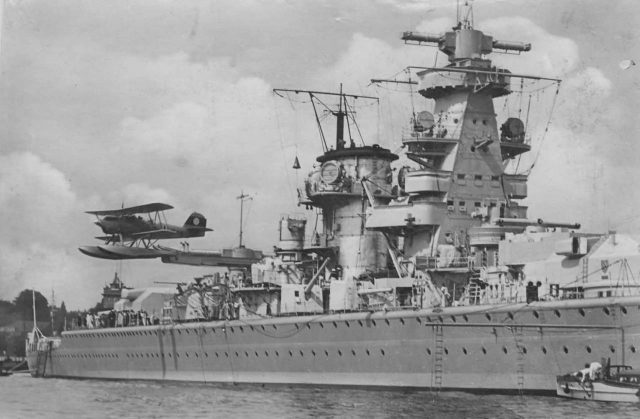
And last, although in my mind it was necessary to start with him, but it was meant to be. Displacement.
Naturally, did not meet the Washington limit, and jumped out for him. And if the "Deutschland" itself is not so strong (10 770 tonnes), "Admiral Scheer" - already 11 540 tonnes, then "Admiral Graf Spee" had a displacement 12 540 tonnes. As seen, appetites are growing.
so, what came out of it?
The output turned out to be very strange ships.
Endurance and cruising range are just great. At the same time, the speed qualities are so-so. clear, that any of the Deutschlands would have left the battleship, but ... "Repulse" and "Rinaun", although they were released 20 years earlier, would easily catch up and make a chop out of this miracle.
weaponry. The main caliber is good, here without question. Any heavy cruiser would choke on a 283mm shell, what, properly, and happened to Exeter, which "Spee" miraculously did not butcher.
But here is the presence of two auxiliary calibers, 150 and 88 mm, it wasn't very reasonable. Many experts believe, what if instead 8 150-mm guns and 88-mm anti-aircraft guns on the "Deutschlands" would put 128-mm station wagons in the amount 12-14 pcs, it would definitely be beneficial, especially, that 128 mm guns were not particularly inferior to 150 mm.
Well, the number of auxiliary caliber guns was frankly not enough. After all, you won’t waste shells of the main caliber, shooting at unarmored vehicles, true? And the really warships "Deutschlands" fired infrequently.
booking. Here the Germans deviated from their principles and the booking was actually made according to the residual principle. That is, the ships were not well protected.
And what do we actually have? We have not so much a cruiser hunter (for this, sorry, too slow and bad armor), how much universal raider. A real lone pirate, thunderstorm of any unprotected (yes and protected) the convoy.
what, properly, combat practice of ships and showed.
"Deutschlands" turned out to be excellent lone raiders. Any transport at a meeting with them would be doomed, what about cruisers?, what lung, what heavy, they were reliably scared away by the main caliber of German ships. Really, in the world at the time the German cruisers appeared, there were only a few ships of the cruising class (the British and Japanese), able to fight fearlessly with a chance of winning with any of the "Deutschlands".
The battle at La Plata is the best confirmation of this.. the, that Spee mutilated Exeter and badly damaged Ajax. Another heavy cruiser was on the way as reinforcements., "Cumberland", but something tells me, that a not very enviable fate awaited him if the battle continued.
In the case of Spee, the British simply outplayed the Germans morally. Continue the Langsdorf fight, not known yet, how would it all work out.
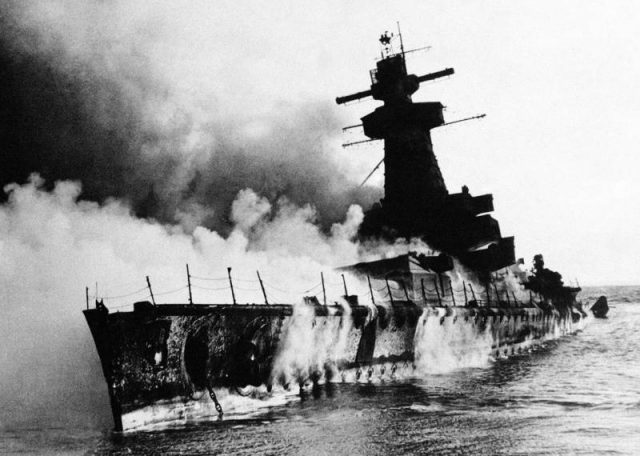 the end «Admiral Count Spee»
the end «Admiral Count Spee»
However, until the moment of his death at the hands of the crew, "Admiral Graf Spee" sank 11 merchant ships, predominantly British. So who was he more dangerous to?, clear and understandable.
"Admiral Scheer" was more fortunate, submersible 17 ships and capturing as a prize more 3. But only two ships were destroyed in combat, and even then it was the British auxiliary cruiser "Jervis Bay", converted from transport and the Soviet icebreaker "Alexander Sibiryakov", 76-mm guns of which could not even theoretically cause any harm to Scheer.
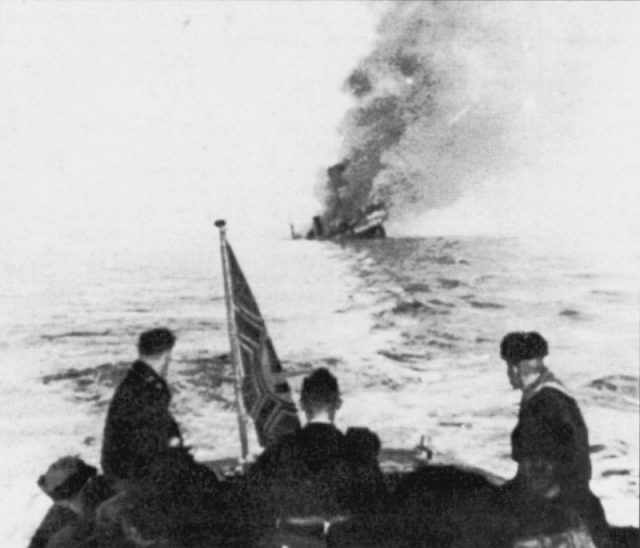 Drowning «Alexander Sibiryakov»
Drowning «Alexander Sibiryakov»
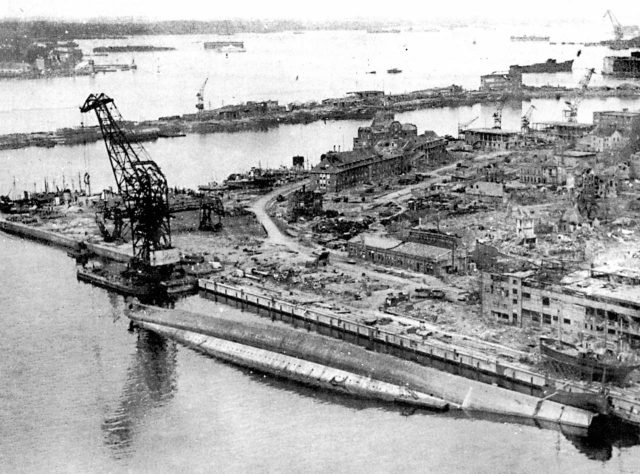 «Admiral Scheer», which is all…
«Admiral Scheer», which is all…
"Deutschland" ("Lützow") could not even boast of victories over civilian courts. It can be safely attributed to the category of loser ships., since until the moment of her death, the cruiser was mainly repaired, because it cost him to try once again to take part in the war, something happened to him.
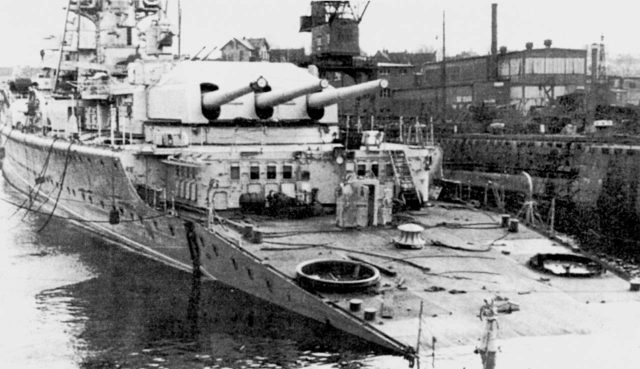 «Lützow» after being hit by a torpedo
«Lützow» after being hit by a torpedo
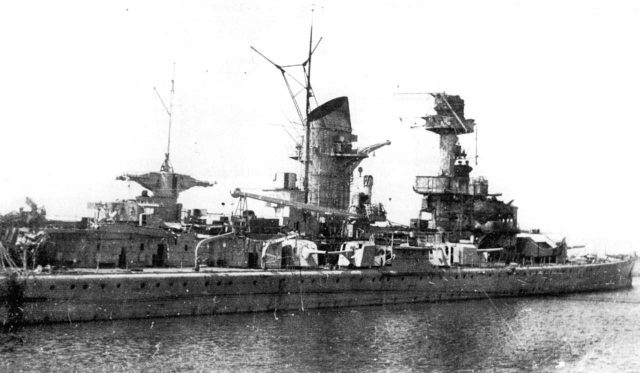 recaptured «Lützow»
recaptured «Lützow»
So in general, the Germans did not get a thunderstorm of cruisers, a thunderstorm of unarmed transports. But these are the nuances of tactical use., inclined to support those, who believes, that the Deutschlands were originally created as raiders, not a counter cruiser. Too many matches, to be honest.
But when all the "Deutschlands" were built and equipped, they made the world a real mess. Everyone figured it out quickly., What did the Germans build?. And understood, what action needs to be taken, otherwise, three lawless people on sea routes can do serious business. What actually happened in the performance of "Scheer" and "Spee".
So that, evaluating the merits of new cruisers, in Europe rushed to build something in response. French people, eg, began construction of Dunkirk-class battlecruisers, the Italians began to think, how to upgrade your old dreadnoughts to fast battleships. Generally, everyone had something to do.
Meanwhile the Germans, having at its disposal "Deutschlands", also thought.
The disadvantages of these cruisers were more than known to them. Should have gone further, because, taking advantage of, German military and shipbuilders thought.
And if you increase the firepower of the ship so much, so that not only bulk carriers are afraid of him? let us say, not two three-gun turrets, and three?
And if not 8 barrels 150 mm, but more? And more anti-aircraft artillery, and not 88-mm, a 105? Moreover, after modernization, the same "Sheer", having received 105-mm anti-aircraft guns, they easily drowned dry cargo ships.
Well, the speed. Still, the cherished figure in 31 the military liked the knot very much, since the same "Exeter" and "Cumberland" gave out no more than 32 knots, which automatically made the ship hard to catch up with heavy British cruisers. And the lungs were reliably scared away by the main and auxiliary calibers.
true, talking about speed 31 node, diesels had to be forgotten and returned to steam turbines. Well, what's so difficult? Yes, cruising range would drop sharply, but it's all fixable.
Of course, all these changes would require spitting on the Washington agreements, more precisely, to the Treaty of Versailles. But they already spat on them, the same "Dunkirk" from the French turned out in the area 22-24 thousand tons.
Well, properly, Germany also forgot about these documents, more precisely, about the Treaty of Versailles. The Germans did not sign Washington.
And what happened?
Well, ship lovers already understood, where am i going.
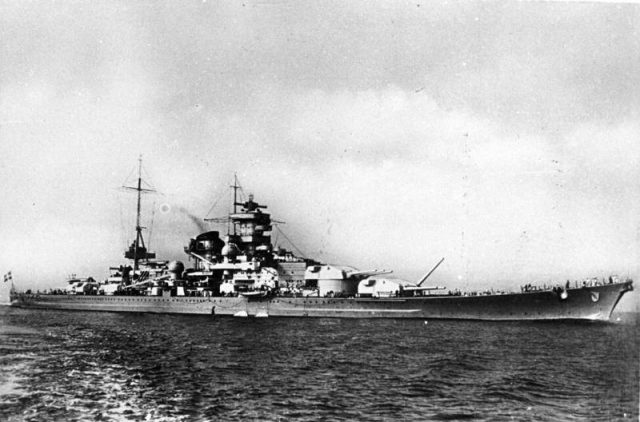 Scharnhorst
Scharnhorst
Correctly, got "Scharnhorst" and "Gneisenau". Also strange ships, not quite battleships, but that's a completely different story.
Assessing the "Deutschlands" as ships of a different classification, other than "weird", nothing comes to mind. Of course, you can trust the germans, who always said, that these ships were invented as a response to the "Washington" cruisers of Britain and the USA, but there are a lot of oddities.
Exeter (and the whole type of "York") compared to any "Deutschland" looks cheap. Despite, what was the last heavy cruiser, built before the war. Yes, and the "Washington" "London" does not look stronger against the background of the Germans.
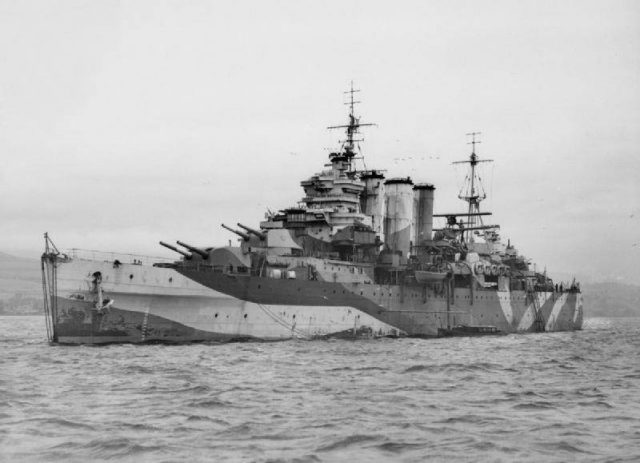 British heavy cruiser Sussex (london type)
British heavy cruiser Sussex (london type)
However, the British built their heavy cruisers in series, Yorkie, "Kents", "London", Norfolks were built in series according to 3-5 units. The Germans built three strange cruisers, each of which was obviously stronger than any British ship.
However, numbers are not always bad.. And the battle at La Plata showed it. Yes, the human factor also played a role, but nonetheless: one not the best heavy cruiser and two light ones actually defeated the "Count Spee". Yes, morally, but it was not Exeter that blew up, and the German ship.
maybe, what, act Germans not one by one, the result would be completely different..
The crowd of the British sentenced "Spee", the crowd beat the "Bismarck", the crowd sank the Scharnhorst.
The latest and very advanced German ships were defeated in battles with not the newest, but numerically superior enemy forces.
The time of lone raiders is over, it's just that in Germany they didn't notice it right away.
Only this can explain the appearance of such specific and peculiar ships.. And - expensive in both senses. Raider-pirate idea of the Kriegsmarine did not turn out to be the best ending.
Although let's be honest: the Germans almost succeeded in trying to fit everything into the Washington standard. "Deutschlands" came out strange, but interesting ships. But there was really no place for them in World War II.
/Roman Skomorokhov, topwar.ru/







